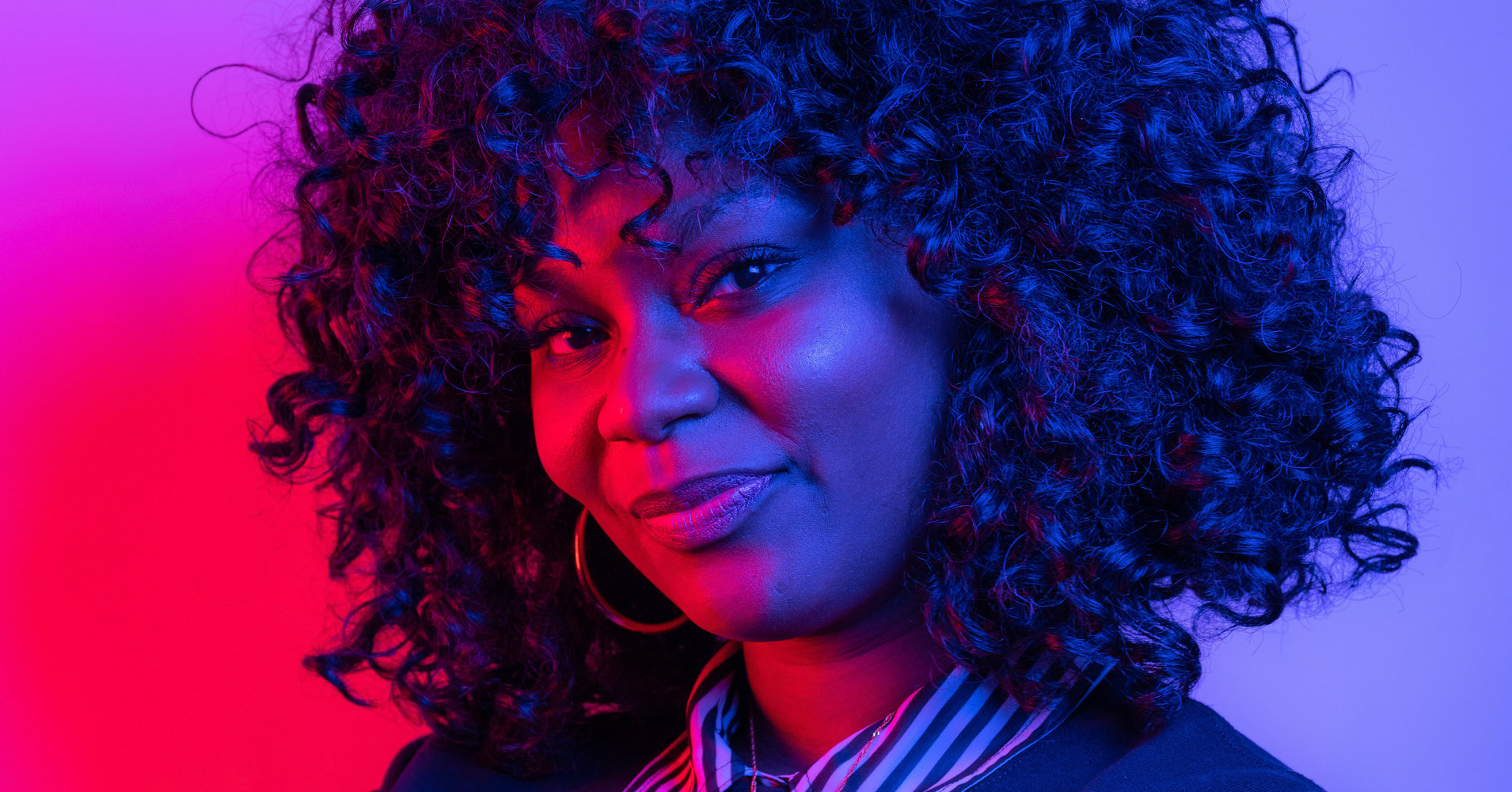[ad_1]
Kevinee Gilmore knows what rejection feels like. After spending five years in foster care bouncing between different homes and high schools, she became homeless. For most of her young life, Gilmore searched for some semblance of normalcy. She realized that she and other foster care kids had that longing in common.
That’s why she created #FosterCare, a social media movement that advocates for foster kids by connecting them with access to opportunities and mentors they wouldn’t have otherwise. Gilmore recognized some of the privileges she experienced that a lot of others don’t have (like the chance to work on Capitol Hill). She also recognized the power of social media and our fascination with celebrities. Gilmore combined the two to create a platform designed to uplift and empower foster kids while working to end the many disparities they face.
For “We Built This,” Gilmore spoke to HuffPost about healing after her personal traumas from foster care, the flaws within the system and the importance of making foster kids feel like royalty.
So I’m the creator of #FosterCare. It’s a social media campaign that engages celebrities and elected officials in a fight for foster youth with the hope to afford them exposure opportunities, access to capital, social capital and housing.
Why did you start #FosterCare?
I started #FosterCare out of rejection. I’ve been advocating for foster care for 17 years ― went into foster care when I was 13 years old and ended up going to five different high schools, 13 different placements, and on my 18th birthday I went to court and found out I was going to be emancipated. And I was like emancipation, emancipation proclamation, that’s how they freed the slaves, right? And so when most of my peers were graduating from high school and having barbecues and graduation parties, I returned to my foster home and was told, “Well, Kevinee, the only way that you’ll be able to stay here is if you give us $250 for rent.”
And at the time I thought that was a million dollars and I was working at the airport ― couldn’t afford that. So I went to Cleveland State University just to have a place to stay. I didn’t think I was smart enough after attending five different high schools and was homeless during my breaks in college. So going to college, the entire time I didn’t think I was going to graduate but not having anywhere to go for my holiday breaks exposed me to so much.
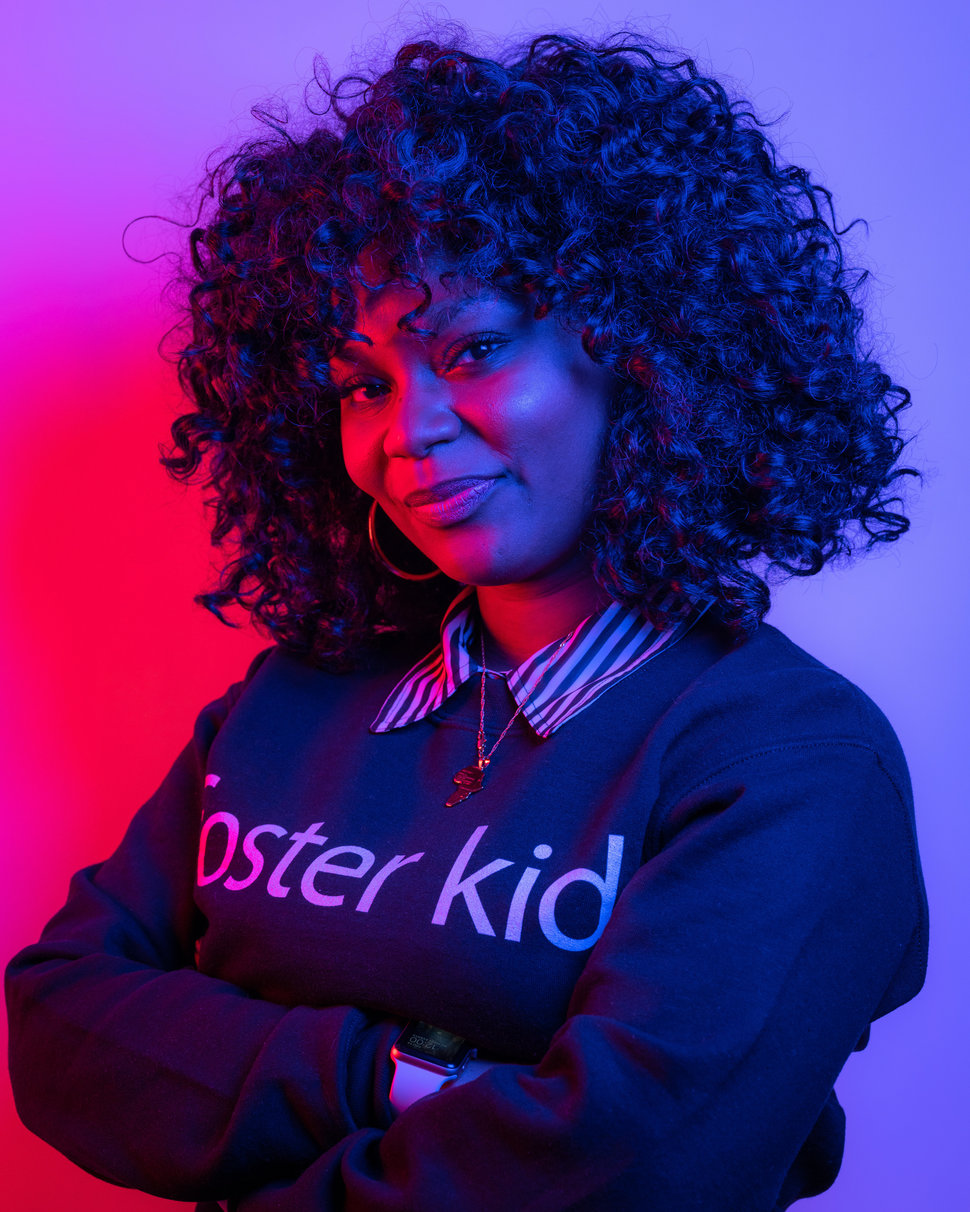
I slept in my car; I slept in shelters; I slept with friends; I became pregnant at 20. As my luck would have it, I’ve always had someone who found value in my story and I always tried to be around people that were better than me and I had an opportunity to work on Capitol Hill in John Kerry’s office and it segued me into Hillary Clinton’s office.
So every time I would come back home from having exposure opportunity for being the foster child because the foster care experience is what afforded me a seat at the table, I would still see that the kids were suffering, the numbers were going up. I’m the oldest of five and my brother who was an honor roll student went to prison for nine years. My sister was a middle child, very quirky, skinny as could be, prostituted for two years.
So having my own personal challenges with the foster care system, I just woke up one day like, “You know what, everyone three years ago was talking about their hashtags. Our hashtag is this, our hashtag is that.” I sarcastically was like, “Well just #FosterCare.” Because no one is looking at this population as a place to sow into. And you have people who are aging out of foster care who are living a lifetime of poverty and it’s so much trauma that it’s being passed on generation and generation and their kids’ kids are coming into the foster care system.
For those five years that you were a foster kid, what do you remember feeling? Did you feel like you were valued?
No, no, I remember feeling extremely embarrassed. I remember being suicidal. I remember feeling like I just wanted to be normal. That was my favorite word. Oh, I just wished I was normal. I never been to prom, never went to homecoming, never had that opportunity to really during my foster care experience get into after-school activities. I didn’t have the opportunity to build lifelong relationships like I wanted to with people because I kept transferring schools. And I remember feeling like, “Why me.” Like, “Why?” At that point, I knew who God was. My mother, despite some of her barriers, was a very spiritual person and I was just like, “Well, why would God make this happen to a kid?”
So I remember having this void, this constant void, this strong desire to belong and a very strong sense of wanting normalcy.
How many foster kids’ lives have you impacted through #FosterCare?
You know what, I don’t even want to say a number because I don’t know. What was mind-boggling to me is that I started to see that it became international. And I thought about that, like, “Wait a minute. There is nowhere in the world you can go that doesn’t have a foster kid or orphan.” (So, in the States, we don’t like if you call us orphans.) But I realized, “Wow, this is way bigger than I ever expected because everyone can feel that void all over the world.” So I had people [in the U.K.] who would hit me up on Instagram, like, you know, this is really helping us.
I had a guy in Gabon, Africa, he made a #FosterCare sign. He felt like if I could help the children in the States, then potentially I can help him as well. And so I don’t know. I have over 17,000 followers right now who I feel like continue to follow the content that I give. But also have had messages from foster parents and birth moms and adoptees who have found value in it, and mothers who just appreciate my transparency about my own barriers.
So I don’t know, but I know based off some of the comments that I get off social media that it’s effective.
Based on the kids within your actual proximity whose lives you’re touching, what kind of opportunities have you exposed them to and what has been their response to having you as an advocate?
So one of the most mind-boggling things happened to me in building this movement. For it to trend, I had to engage celebrities and so I leverage the celebrities to take the stigma away of really using our faces to say, “Hey, go get a foster kid.” Most people don’t want to be a foster parent and so if I leverage Teyana Taylor’s face or Chris Rock or Tony Rock holding a foster care sign, more people are more prone to look as to why that particular person is holding this sign. And those are people who’ve supported the campaign.
As a result of that, it kept me on a fast track of attending events and sometimes being invited to events so that people can hold the foster care sign. So I say all that to say, I wanted to meet Van Jones and I snuck backstage to meet him. And a woman stops me like, “OK, who are you and why are you back here?” And I’m like, “I’m Kevinee Gilmore. I’m a digital activist. I’m the creator of #FosterCare, and I’m coming to get Van Jones’ picture.”
And she looks at me like, “I don’t think we have you on the list, you don’t have any press credentials,” and I said, “Well, let me show you some of the people that I’ve engaged.” So I’m showing her Big Sean, I’m showing her Emory Jones, I’m showing her Hillary Clinton, and I could physically feel her softening, right, because let’s be real, I’m sneaking backstage and that’s inappropriate. The whole time I didn’t realize that I was talking to the COO of Roc Nation. So I was talking to Des Perez and she looks at me like, “Wow, you are really serious about this.”
So having one woman just listen, afforded foster youth 304 tickets to the Jay-Z concert. So that was the first-ever exposure opportunity that I had on that level. Of course, I’ve done other things but not that big, not that many tickets. And so those kids were able to be chauffeured to and from the concert, before they went to the concert we had like the pregame where they had all the food and stuff that they wanted. They got a free #FosterCare T-shirt. But the icing on the cake was this, most of them don’t want to identify as a foster kid. And some of them hate the word foster care. So I was strategically positioned on the floor and I’m like “OK, God, I know you’re real, I know you’re real.” I had my little foster care sign, and I was like, “I know he’s gonna see the sign.”
So the whole time, at first I was like dancing, Jay-Z sees the foster care sign and he gives us a shoutout. Like, “I see the young lady with the foster care sign, just want to honor you guys.” And then he also dedicates the “Hard-Knock Life” song. It gave foster youth such a sense of pride in that day. And ever since then I feel like it’s just been on. Like Roc Nation has sent boxes of clothes, they’ve afforded foster youth to do private movie screenings, they’ve been able to … even here kids who are in New York that are in foster care going to Tidal Brooklyn, they gave 158 tickets for that.
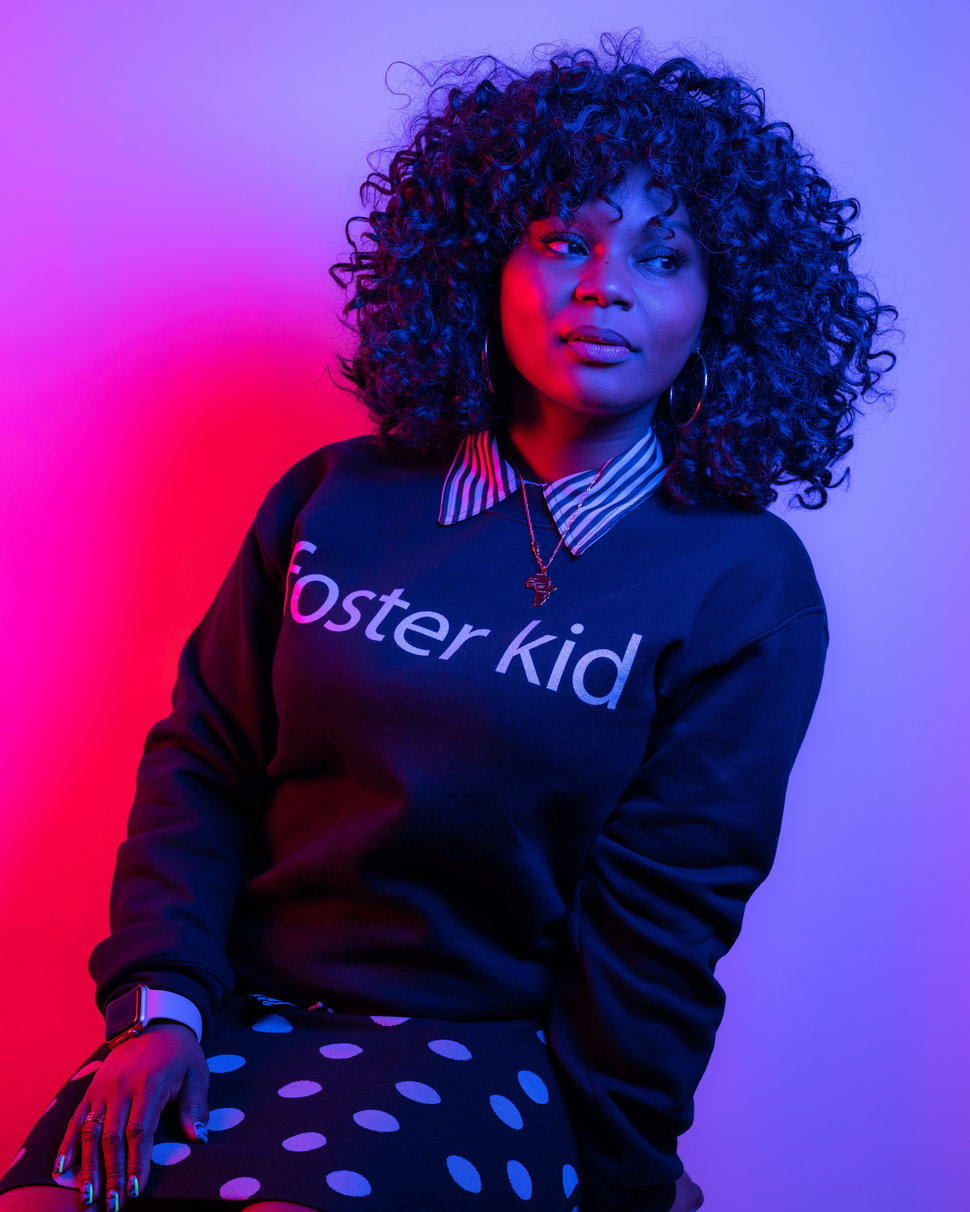
Just being in those rooms, some of those babies had never been to Barclays Center. And that’s a big deal because this is their city and for me to be from Cleveland and be able to provide that exposure opportunity is mind-boggling. I’ve also created convos with CEOs for foster youth. So every month I identify a CEO who would be open to talk about their challenges and barriers in the career field that they’re in.
And so the last one that I did I had 12 girls and I had a female pilot from Delta and the girls were able to get in and out of private jets, take pictures, and what they identify is that this woman told them that she became a pilot at 17. So for my 17-year-old girls that were there, they were jacked out of their mind. Now when you age out of foster care in most cities, especially in my city, they give you a welfare application and priority housing in the projects. So you see the projects before you see a jet. So I want to create this aura of class, so that they can feel like they’re chosen opposed to all the barriers that I felt in foster care. You won’t be able to probably be able to sit courtside with your birth mom but because you were a foster kid, you’re sitting courtside because Jeff Green, [then] from the Cleveland Cavaliers, identifies this is something that maybe I should pay attention to.
And that’s like a lifelong experience. On Saturday when I go back home to Cleveland, I have a farmer who does urban farming and we’re going to have 15 boys come out to that. So it’s just exposure and access early. You know what I mean? Like, how do we expose them to something that they would have had [if] they had [involved] parents. And so I feel like I’m like their black Mother Teresa or their foster mom.
That’s so important because we don’t see black kids period being exposed to or being felt like they were given the high-class treatment, let alone foster kids, and you were telling me something earlier about the disproportionate number of foster kids who are actually black. Can you talk about why it’s important to advocate for them and make sure they have this kind of access and this kind of awareness and light shown on them?
I want to take it a step even further back because it is Black History Month, and we toss that around. February comes, and we really don’t look at the barriers that slavery has caused. So for this to make sense and for the data to match history, I want us to think about that Sojourner Truth was the first [black] person to get a lawyer to get her kids back. So foster care to me is slavery. And most of the kids who are in foster care are African-American. So in Cleveland, 76 percent of the kids in foster care are African-American. And I think part of that is we don’t have access to lawyers, we live in poverty, and systematically we respond to authorities that don’t look like us.
That’s what we’ve learned here, I mean we literally are babies, literally we’re taken. So when I think about what the foster care system does ― and I learned a long time ago when I did network marketing that the system was an acronym for save you time, energy and money. This system generates $26 billion a year. I know I said that, but I want to say that again. And so these people who are having their kids taken, and the kids that are coming into care, they’re like modern-day slaves because it generates income.
So we’re not thinking about outcomes, we’re thinking about income. And so for me knowing the data, being a former foster youth, I feel it’s my duty to stand up and advocate for them. But I also feel it’s their birthright, and I feel like if Harriet [Tubman] didn’t come back and forth to free people, like where would we be. If we didn’t have leaders in the past who had the gumption to say this is some bullshit. Now, exactly where would we be? And then just having my life spared so many times.
I mean you’re looking at someone who used to steal their sanitary napkins, steal food because the other girls that were in foster care to be able to get those things, they were prostituting. And I’m someone who should have three felonies for stealing my basic needs. But for whatever reason each time come out clean. So part of it is my duty but part of it is my favor that I want to continue to replicate over and over and over and over again. And really advocating for foster youth was my first love before I met my son.
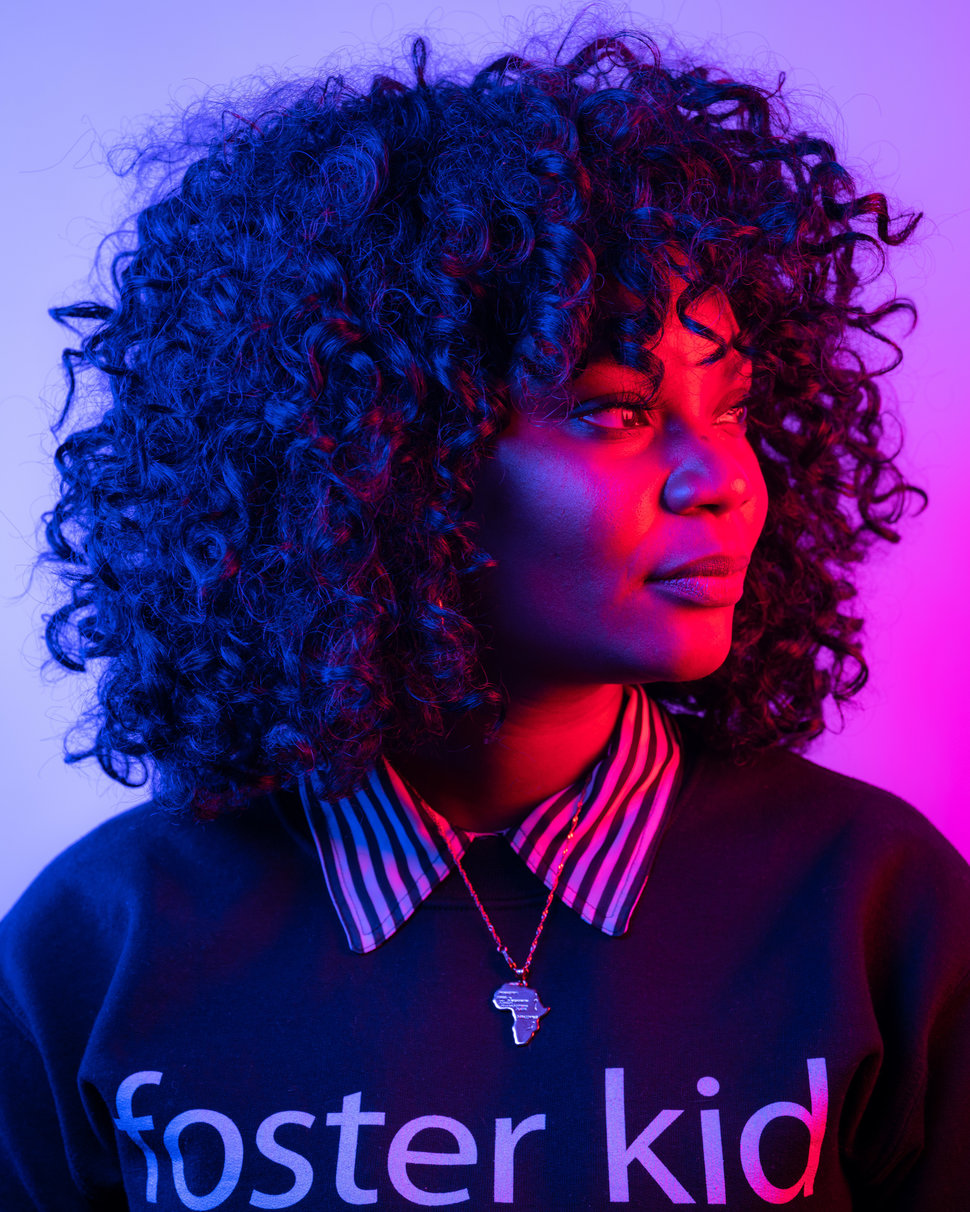
What has coming up in the foster care system taught you about motherhood?
So I talked about being pregnant at 20. I had an abortion. So I feel like that blood is still there. So not only did my foster care experience groom me for something else, it left some scars. And I think now about to be 35 with a son who will be 7, that I technically have like this 14-year-old person that’s following me around. You think about that later. I think it also made me look at my mother as more of a case study as opposed to how the hell did you lose five kids over time and managed to keep my baby sister.
But I get it. I can understand now why maybe she felt like, “I’m just gonna go chase my dreams.” She wanted to be a standup comedian and “I’m gonna leave my kids with this man,” my stepfather who was very physically abusive for a month. Because maybe in her mind in that month something was gonna break. And she was investing her time so that she could afford us a better future. I think about that when I get in airplanes or drive to places on behalf of #FosterCare and I’m leaving my baby.
So there is some understanding but there’s also some accountability that I felt like the exposure early, the access, the creating relationships, the educating myself, the not engaging in drugs and not having just anybody around my son, the therapy that I’m in on Fridays. To not duplicate those behaviors. I felt like being a mom at this point is like a superpower and I have created the purest clone of myself but I’m also very aware that this is his life.
I don’t want my traumas to take over him being able to move as he wants to and I know that sounds probably weird because a lot of times people feel like, “This is mine.” I used to have that challenge with “this is mine.” Because of everything that was taken from me. My baby, my clothes, my this because of all the things that have been taken but going to therapy, talking to other leaders, working on my personal development. I understand that maybe my mother didn’t do the best job, but look at how I turned out.
You know what I’m saying? So there’s a lot of forgiveness in my motherhood even forgiven some of the things that I’ve exposed my son to that I’m not necessarily happy from my past trauma but parenting is just one day at a time. It really is.
What have some of your conversations been like with other parents or people who want to adopt?
OK, so here’s where the lines sometimes cross. There’s a part of me that adores anyone who wants to adopt. Like, “Oh, my God, you want to be a foster parent,” like, immediately you get my attention. But then there’s another part of me that my heart sinks just a little every time I see a white family with black children. And even though I know that they have the best intentions ― well, some people do, some people it’s like having the latest luxury car or it’s like a fad. I feel like, “Darn, no one from the culture thought enough to take the class.” I felt like people have a gun license, hair license, driving license. I don’t know, like, all these licenses but they don’t have foster care license.
And realistically in Ohio, in 2020 it’s projected that over 20,000 people will be in foster care. And that is a very large number. It’s over 400,000 kids in care [in the country]. LA has over 28,000 kids in care at any time, they make up the largest [in any city]. So for Ohio to have projections coming in that there will be over 20,000 kids in care, one of the biggest things I hear is fear. People are afraid of kids. They’re afraid to have foster kids in their house. And one of the things I want to charge to [the] African-American community in Hollywood is the projections that you put on the screen. You’re making it hard for people to want to foster or adopt.
Because when you think about the movie, I think it was like “When the Bough Breaks” with Morris Chestnut and they had a surrogate and the surrogate was a former foster kid. She was crazy; she was promiscuous; she kept wanting to come on to Morris Chestnut. You had “The Perfect Guy,” handsome as heck and then violent. So Sanaa Lathan was just trying to get away from him but when it came time to look at his case file it was like, “Oh, he had been in foster homes.”
We populate the system in a way that is so disgusting when you look at all the other things we’re doing with our time, energy and our money. It’s like, can we come back to get the tribe.
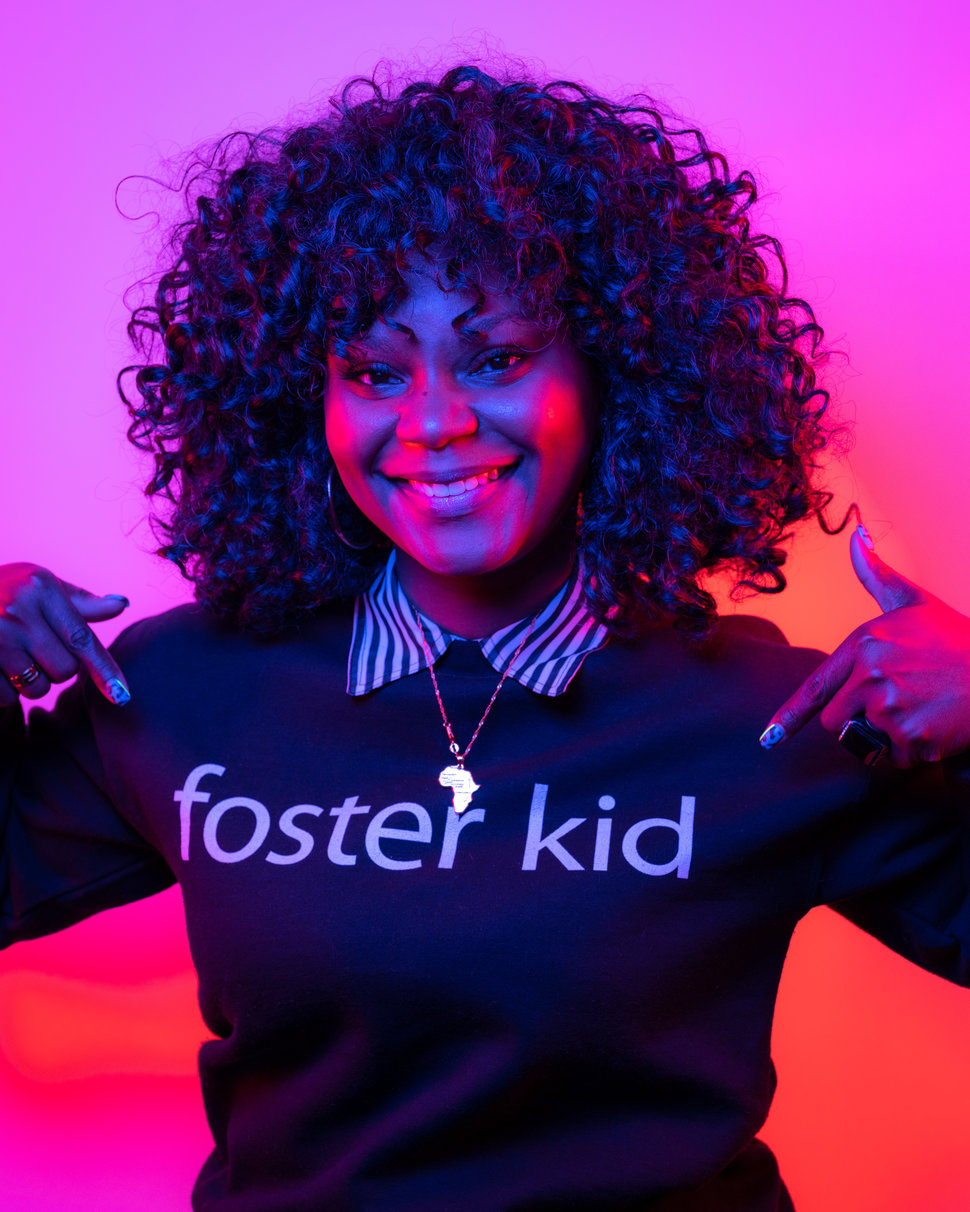
What are your hopes for #FosterCare in the future?
I hope to get my pilot lessons and travel nationally and internationally, seeing what foster care looks like all over the world and provide aid to the people who are out of the States leveraging foster youth who want to be a part of the change. So that’s one thing, giving them exposure, having them be able to travel.
I want brands to partner with me. I also would love, love, love, love, love to work with child welfare agencies all over the world. They’re doing it wrong. Like, we can’t continue to do it the way that we’ve been doing it. They’re not talking the language, they’re not moving people to action in a way that would make a person want to be a foster parent or even look in it. And I want to make it fashionable. I made foster kids shirts, hoodies. I’m in therapy hoodies and T-shirts because I feel like, “Why does being a foster kid have to be such a disgrace?” When you go to the military, you get stars and stripes and let’s wear it as a badge of honor. So there again, partnering with brands to make this whole orphan fly lifestyle a movement and also a movement that actually moves. You see me on the street and I’m wearing a foster kid hoodie, you’re like, “What? Is she really a foster kid?” It opens up so many conversations.
So 76 percent of girls who age out of foster care are mothers before their 21st birthday. Fifty-four percent of kids who age out of foster care don’t get their high school diploma. Thirty-six percent of kids who age out of foster care go to prison within the first year or two of aging out. So this is a pipeline to prison. When you have your people who advocate for prison reform, they forget this particular population. Less than 10 percent of [foster] kids actually get their college degree. And in 2014, 60 percent of the human trafficking cases were kids who aged out of foster care.
Foster youth have PTSD two times that of a war veteran. A war veteran, that is really deep. So we throw out trauma and depression and mental health all the time but this particular population has trauma two times that of someone who’s been to war.
So, we have all these activists who care about education reform, human trafficking, pregnancy rates, and they don’t even have in their publications, even in their diction, foster care. So because foster kids don’t see foster kids or foster care in that, in brochures and things like that, they’re missing the most vulnerable population in the world.
This interview has been edited for clarity and length.
[ad_2]
Source link

